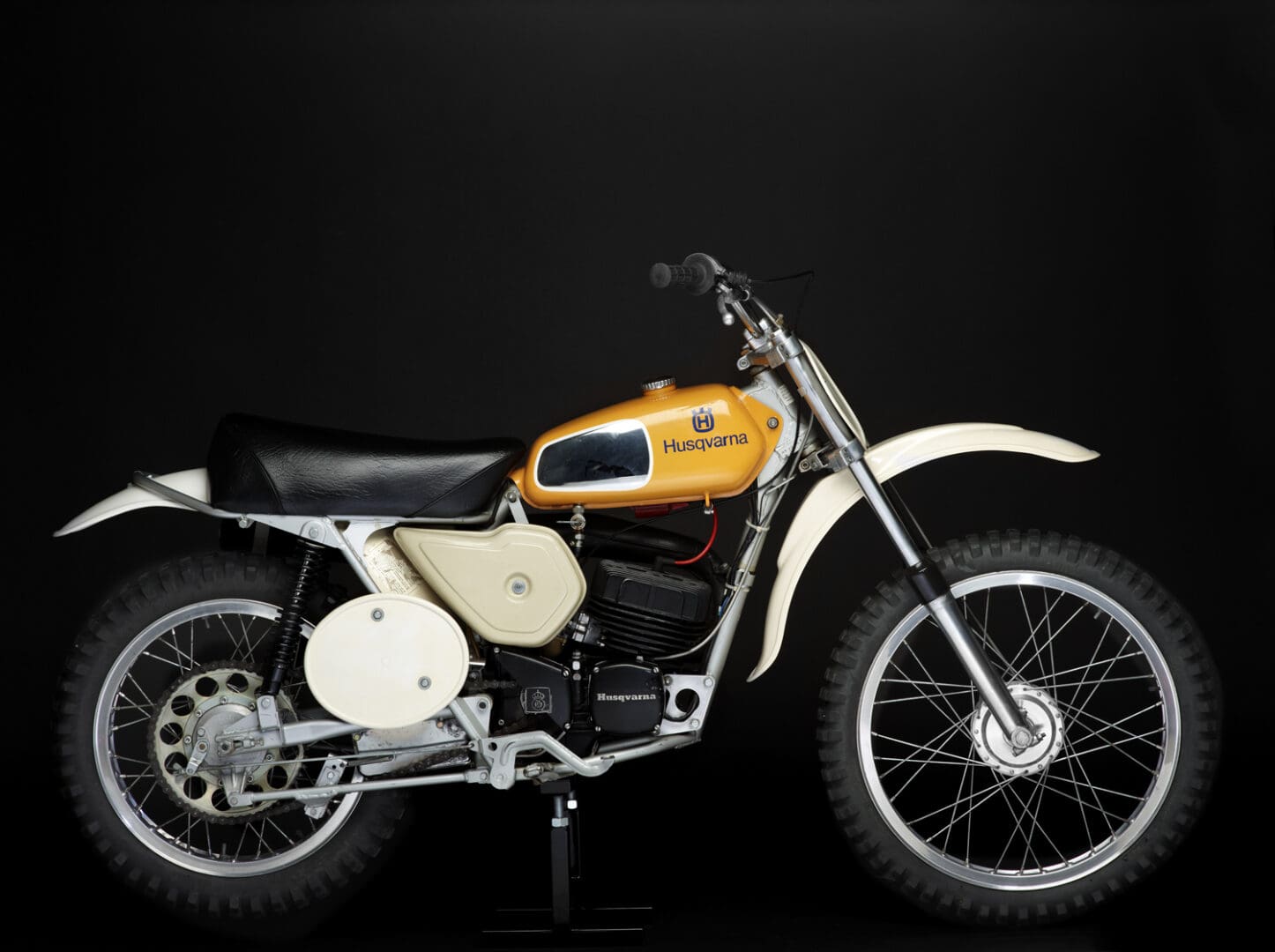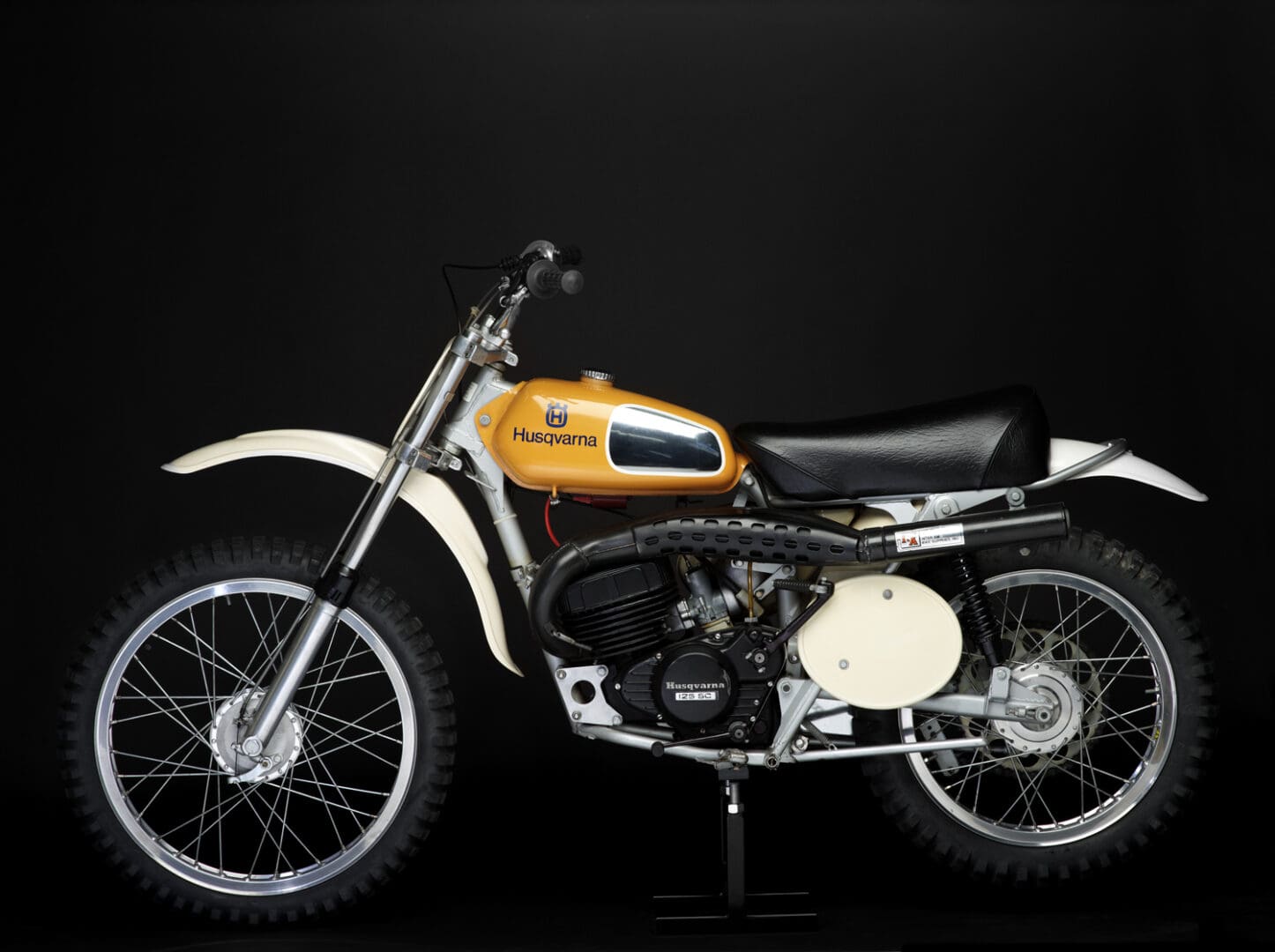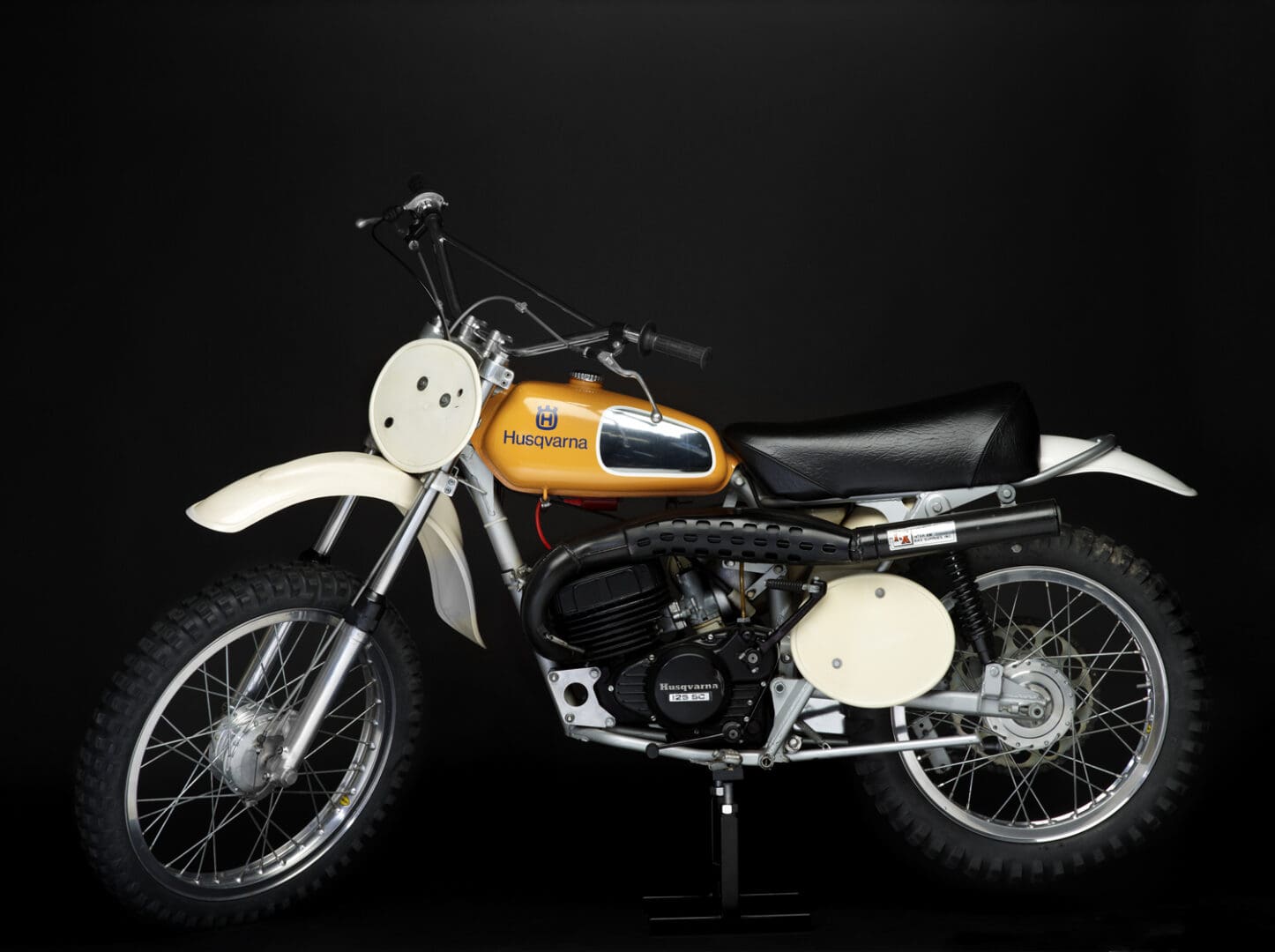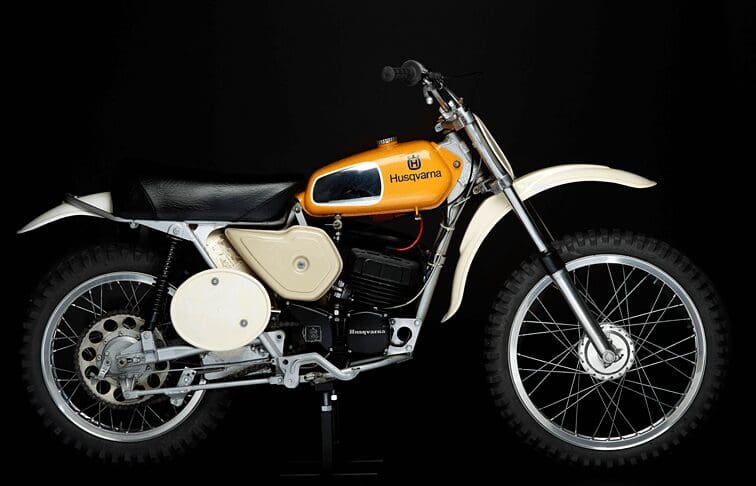1974 Husqvarna 125SC
Model Information
It's really nice to write about a European manufacturer that was very involved in the earliest years of motocross and is still in business. Although not yet at the level they once were in the early 1970s, Husqvarna is once again producing the quality motocross bikes they were long known for. Many of today's riders would be surprised to hear that early on, Husqvarna won World Championships on both four strokes and two strokes. It was also Husqvarna's nimble, powerful, and light 250 two-strokes that shifted the then 500cc four-stroke dominated motocross world to the two-stroke bikes that have ruled the market until the shift back to four-strokes in the last decade.
In the village of Huskvarna (the village spells its name with a "k"), a watermill was built on the river (in Swedish, "Hus" means house, and "Kvarn" means "mill"). In the 1600s, the then-King of Sweden utilized the millworks for the development of muskets for the militia to defend the country. In the late 1800s, production switched to sewing machines and bicycles, with the first motorcycles built in 1903.
For a detailed and fascinating history of Husqvarna, pick up the book entitled "Husqvarna Success" by Gunnar Lindstrom. One of the many interesting stories mentions how John Penton of Penton Motorcycle fame became the first east coast distributor for Husqvarna in 1967 and won the National Enduro Championship on a 250 Husky in 1969. Apparently, he lobbied Husqvarna to develop a 125, but they weren't interested, so he created his own Sachs powered 125 in 1965 with the help of KTM, who at the time only produced mopeds and scooters.
The infamous Edison Dye is largely credited with bringing motocross from Europe to the US by convincing Husqvarna to ship their 250cc motocross bikes here along with 3-time 250 World Champion Torsten Hallman to promote them. Dye also wanted Husky to produce a 125 motocross model that beginners could start with and then eventually graduate to the bigger bikes.
In 1972 Husqvarna introduced a new generation of engines for their 250, 400, and 450s, which moved the shift lever from the right side of the engine to the left side. They also finally introduced their first 125 motocross bike! Although Husqvarna and Dye now had a 125, there wasn't yet a 125 National Motocross Series in the US, so Dye held the US 125 World Cup in St. Louis, MO. As "Husqvarna Success" stated, "Dye had an ulterior motive to promote his Dye Rebel. It was the one and only major event where the Dye Rebel 125 was seen".
To my knowledge, the first-year Husky 125s sported a steel tank, 6-speed gearbox, alloy fenders, Betor forks, and French Leleu hubs. The biggest flaw was weight, at 26 lbs heavier than the shortly thereafter release Elsinore, likely due to the fact that the 125 shared many components of the 250 and 400. The Betor forks were praised, while the rear suspension was reportedly ultra-stiff.
One of the more successful dealers on the West Coast, Anaheim Husqvarna, was owned by a guy named Mitch Payton who later changed the name to Pro Circuit.
1974 was the first year of the 125SC (semi-close ratio). According to the Owner's Manual, the only differences between the 125 CR (close ratio) and 125SC models were the gear ratios and carburetors (the CR had a Bing, and the SC had an Amal). The sales brochure also stated that the SC weighs two more pounds than the CR. And although I have not found a magazine test on the 1974 125SC, Cycle Illustrated stated that the 1974 125CR was "the closest thing you can get to a true factory prototype in the one-two-five class." A Cycle Illustrated test on the 1975 125SC stated, "One ride on the 125 Husqvarna was enough to convince us that the machine was competitive enough to give most riders as good a chance at first as they would have on the Elsinore, YZ, or TM." The same test also mentioned that the SC had a much broader power spread than the CR and that the majority of 75 models would be SCs.
In 1974, Husqvarna waterproofed the air filter, changed from alloy fenders to ABS plastic, and incorporated a silencer into the exhaust. The 72' and 73' CR had an Amal carb that was switched to a Bing in 1974. The 74' models also received new footpegs. Actually, they were the same footpegs with three drain holes drilled in each one. Another nice addition was the fully floating rear brake.
The bike (like many 125s) was reported to have a very narrow power band, which required keeping the revs high and the gear shifter moving. There was still no reed valve. According to Cycle Illustrated, the Swedish engineers didn't believe that the 125 engines would benefit from the addition of the reed valve, as did the bigger bikes.
With the rapid and relentless onslaught of Japanese 125 motocross bikes, Husqvarna was constantly playing catch up.
1974 Husqvarna 125SC
There's nothing better than finding an original bike in mint condition, and that was the case with this 125SC. I acquired this bike in March 2007 from the 2nd owner in Grand Junction, Colorado.
He had purchased the bike from the original owner in 1996 as an investment and never rode it. The original owner was a doctor who purchased this bike from the Competition Cycle Center in Grand Junction, Colorado, on April 5, 1975, for $832. I was told that he rode it 2-3 times, decided motocross wasn't for him, and put it away. Interestingly, the dealer installed a Gemco reed valve on this bike prior to delivery. As I mentioned in the Model Info section, the 1974 Husqvarna 125s didn't come standard with a reed valve, as the engineers didn't believe they benefitted from them as much as the bigger bikes. Apparently, the dealer felt differently. The original Trelleborg tires on the bike have almost zero wear. The bike even came with the original tool kit & pouch, Owner's Manual, and original Statement of Origin.



